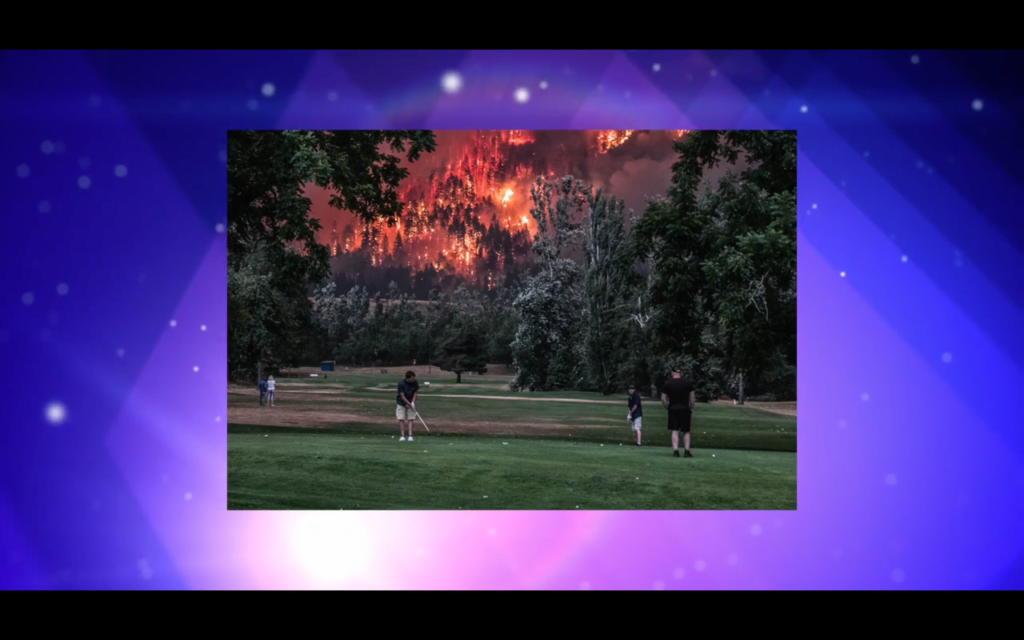

ProgrammingCall for SubmissionsNewsBecome a Member
Rentals + Services
About VIVO
Archive
Video Out Distribution
DonateBuy VIVO Totes


Opening Date
Wed, Nov 16, 2016 - 7pm
In 1957, at the Sixth Weather Radar Conference at MIT, thousands of scientists spontaneously broke into song; their voices rang out, singing in unison:
“More data, more data, from pole to equator,
We’ll gain our salvation through mass mensuration.
Thence flows our might, our sweetness, our light.
Our spirits full fair, our souls sublime;
Measuring everything, everywhere, all the time.”
Before and After the Sixth Radar Conference is a solo exhibition of two works by Byron Peters which include Added Value, an 8-channel sound installation, a film score for a far-future documentary on surplus value, and Anti-Racist Mathematics and Other Stories: Pure Difference, the debut episode in a series of educational videos and other works, learning tools towards a post-capitalist school system.
Added Value is a succession of musical composition and foley sounds in both real, imagined and speculative social history: a choral restaging of the 1957 MIT Conference theme song via a crowdsourcing platform, weaponized muzak, new borders, and fleeting materiality. The work’s corresponding visual images reside in the future, but this audio proposes a semblance of how our present relationship to surplus value is set against the perpetuity of the material. Social aspects that sustain human experience in the realm of labour, information exchange and geography are increasingly determined by data, a system of evidence derived from the suppression of flesh and touch.
Pure Difference asks its viewers “What is a number?” This introductory episode deals with the inclination to rely on data as truth, reassurance and security with a researched history of how these systems come into fruition through power, bravado, fear and invention. Bearing the rhetorical and visual tropes of a tech conference presentation, trashy YouTube video, and film essay, Peters proposes a pedagogical experiment: in the process of solving a simple math problem, or applying a scientific formula to a hypothetical, what social histories are embedded in and perpetuated by this action through the languages of math and science, of finance and empiricism? To sift the languages of science and math — fields dominated by false neutrality — is to disclose how these languages have been employed to buttress power, galvanize authority, and further complicates their use in the disavowal of subjectivity. It is also to speculate on what roles these practices of generating evidence will hold in the future.
Files
VIVO is located in the homelands of the xʷməθkʷəy̓əm (Musqueam) Sḵwx̱wú7mesh (Squamish), and səl̓ílwətaɬ (Tsleil-Waututh) peoples in a warehouse space at 2625 Kaslo Street south of East Broadway at the end of E 10th. Transit line 9 stops at Kaslo Street on Broadway. From the bus stop, the path is paved, curbless, and on a slight decline. The closest skytrain station is Renfrew Station, which is three blocks south-east of VIVO and has an elevator. From there, the path is paved, curbless, and on a slight incline. There is parking available at VIVO, including wheelchair access parking. There is a bike rack at the entrance. The front entrance leads indoors to a set of 7 stairs to the lobby.
A wheelchair ramp is located at the west side of the main entrance. The ramp has two runs: the first run is 20 feet long, and the second run is 26 feet. The ramp is 60 inches wide. The slope is 1:12. The ramp itself is concrete and has handrails on both sides. There is an outward swinging door (34 inch width) at the top of the ramp leading to a vestibule. A second outward swinging door (33 inch width) opens into the exhibition space. Buzzers and intercoms are located at both doors to notify staff during regular office hours or events to unlock the doors. Once unlocked, visitors can use automatic operators to open the doors.
There are two all-gender washrooms. One has a stall and is not wheelchair accessible. The other is a single room with a urinal and is wheelchair accessible: the door is 33 inches wide and inward swinging, without automation. The toilet has 11 inch clearance on the left side and a handrail.
To reach the bathrooms from the studio, exit through the double doors and proceed straight through the lobby and down the hall . Turn left, and the two bathrooms will be on your right side. The closest one has a stall and is not wheelchair accessible. The far bathroom is accessible.
Byron Peters is an artist and writer of Chinese-Canadian and European descent. His practice critically engages labour and materiality in the context of emerging technologies, economic imaginaries, prison education, and the effects of gentrification and displacement. Peters’ solo and collaborative works have been exhibited at The Darling Foundry, Montreal; Para Site, Hong Kong; ICA Miami; The White Building, London; The Elizabeth Foundation for the Arts, New York; The Asian Art Museum of San Francisco, and others. His writings have appeared in Continent, SFMOMA Open Space, Cesura//Accesso, and Fillip.
Stacey Ho lives on the unceded territories of the xʷməθkʷəy̓əm (Musqueam), Sḵwx̱wú7mesh (Squamish), and səl̓ílwətaʔɬ (Tsleil-Waututh) peoples. Their practice considers intersections of culture, history, and embodiment from a feminist perspective while incorporating language, sound, and gesture. Their work has been presented at Art Metropole, Justina M. Barnicke Gallery (Toronto), Galerie oqbo (Berlin), Artcite (Windsor), RAM Galleri (Oslo), Or Gallery and the Vancouver Art Gallery. They organize Slow Wave Small Projects, a one-week Gulf Island retreat that re-imagines approaches to learning and art-making from feminist, activist, and land-based perspectives.